Karen Goldberg, University of Washington
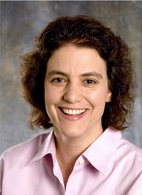
Karen Goldberg received her A.B. degree in 1983 from Barnard College of Columbia University. During her undergraduate studies she did research with Professor Roald Hoffmann at Cornell University in Ithaca, NY, Professor Stephen Lippard at Columbia University and Drs. Tom Graedel and Steven Bertz at AT&T Laboratories in NJ. Her Ph.D. is from the University of California at Berkeley in 1988 where she trained under Professor Robert Bergman. Following a postdoctoral year with Professor Bruce Bursten at The Ohio State University, she joined the faculty at Illinois State University. In 1995, she moved to the University of Washington in Seattle as Assistant Professor of Chemistry. She was awarded tenure and promoted to Associate Professor in 2000 and to full professor in 2003. From 2007-2010, she was the Lawton Distinguished Scholar in Chemistry and since 2010, has been the Nicole A. Boand Endowed Professor in Chemistry. She currently serves as Director of the NSF Phase II Center for Chemical Innovation, the Center for Enabling New Technologies through Catalysis (CENTC). Professor Goldberg is best known for her work developing mechanistic understanding of fundamental organometallic reactions and application of that knowledge in homogeneous catalytic systems. More than 30 graduate students and postdoctoral research associates and 45 undergraduate students have trained in her laboratories and she has co-authored more than 100 papers.
Shannon Boettcher, University of Oregon
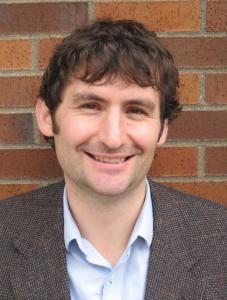
Shannon Boettcher is an Assistant Professor of Chemistry at the University of Oregon. Professor Boettcher received his B.A. in chemistry with a physics emphasis at the University of Oregon in 2003. He received his Ph.D. in Inorganic Materials Chemistry with Galen Stucky at UC Santa Barbara in 2008. His postdoctoral work was at the California Institute of Technology working with Nate Lewis (Chemistry) and Harry Atwater (Applied Physics). Professor Boettcher joined the Chemistry Department at the University of Oregon in 2010 and was named a Cottrell Scholar in 2014. His research interests center on developing inorganic materials for solar energy conversion and storage.
Jillian Dempsey, UNC-Chapel Hill
.jpg) Jillian Dempsey is an Assistant Professor of Chemistry at the University of North Carolina - Chapel Hill. She earned her S.B. in Chemistry from M.I.T. in 2005 where she performed undergraduate research with Dan Nocera. She obtained her Ph.D. from Cal. Tech. in 2011 working with Harry Gray. She then went to the University of Washington for a post doc with Daniel Gamelin. Professor Dempsey was awarded the ACS Division of Inorganic Chemistry Young Investigator award in 2011. In her short time at UNC she has authored papers in Nature Chem., J. Am. Chem. Soc., and the viewpoint article "Evaluation of Homogeneous Electrocatalysts by Cyclic Voltammetry" in Inorg. Chem. Her research focuses on developing efficient solar energy conversion processes.
Jillian Dempsey is an Assistant Professor of Chemistry at the University of North Carolina - Chapel Hill. She earned her S.B. in Chemistry from M.I.T. in 2005 where she performed undergraduate research with Dan Nocera. She obtained her Ph.D. from Cal. Tech. in 2011 working with Harry Gray. She then went to the University of Washington for a post doc with Daniel Gamelin. Professor Dempsey was awarded the ACS Division of Inorganic Chemistry Young Investigator award in 2011. In her short time at UNC she has authored papers in Nature Chem., J. Am. Chem. Soc., and the viewpoint article "Evaluation of Homogeneous Electrocatalysts by Cyclic Voltammetry" in Inorg. Chem. Her research focuses on developing efficient solar energy conversion processes.
Cliff Kubiak, UCSD

Cliff Kubiak is the Harold C. Urey Chair in Chemistry and Distinguished Professor of Chemistry and Biochemistry at the University of California - San Diego. He obtained his Sc.B. from Brown University in 1975 and his Ph.D. from the University of Rochester in 1980 working with Rich Eisenberg. Professor Kubiak did his postdoctoral work at M.I.T. with Mark Wrighton. From there he went to Purdue University where he was appointed Assistant Professor of Chemistry in 1982, Associate Professor in 1987 and Professor in 1990. He moved to the University of California - San Diego in 1998 and was appointed Distinguished Professor in 2008. Professor Kubiak has served on the editorial advisory boards of Acct. of Chem. Res., Inorg. Chem., and Mat. Sci. Semicond. Proc., and he was awarded the ACS Award in Inorganic Chemistry in 2012 and the Basolo Medal in 2015. He has authored over 200 papers and his current research focuses on the electrocatalytic reduction of carbon dioxide.
Adam Johnson, Harvey Mudd College
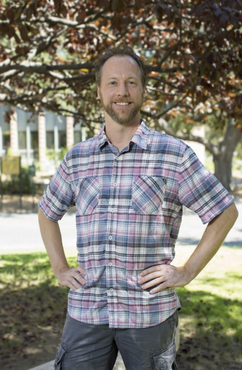 Adam Johnson conducts research in the field of asymmetric catalysis and organometallic coordination chemistry. His research group studies the conversion of straight chain organic molecules (aminoallenes) into nitrogen containing rings (pyrrolidines). These products and their synthesis are of potential interest for medical applications, as many pharmaceuticals have these nitrogen containing rings. Johnson has been at HMC since 1999 and has worked with more than 42 undergraduate students. In addition to his chemical research program, he has also published on pedagogy in inorganic chemistry and is co-founder and member of the Leadership Council for the Interactive Online Network of Inorganic Chemists and its website, VIPEr. In addition to teaching inorganic chemistry, Adam also teaches freshman writing and a new course on the chemistry of cooking.
Adam Johnson conducts research in the field of asymmetric catalysis and organometallic coordination chemistry. His research group studies the conversion of straight chain organic molecules (aminoallenes) into nitrogen containing rings (pyrrolidines). These products and their synthesis are of potential interest for medical applications, as many pharmaceuticals have these nitrogen containing rings. Johnson has been at HMC since 1999 and has worked with more than 42 undergraduate students. In addition to his chemical research program, he has also published on pedagogy in inorganic chemistry and is co-founder and member of the Leadership Council for the Interactive Online Network of Inorganic Chemists and its website, VIPEr. In addition to teaching inorganic chemistry, Adam also teaches freshman writing and a new course on the chemistry of cooking.
Nancy Williams, Keck Science Dept, Claremont McKenna, Scripps, Pitzer
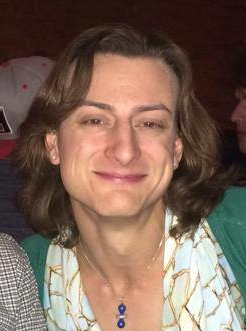 Nancy Williams teaches at the Keck Science Department of the Claremont Colleges, which serves the students of Scripps College, Claremont McKenna College, and Pitzer College. She teaches Inorganic, Organic, Genchem, and AISS, the Keck Science Department’s Accelerated Integrated Science Sequence, which combines intro chem, intro physics, and intro bio into a triple-team-taught course. She has also taught in the Advanced Lab and a First Year Humanities Seminar. Her research is mechanistic and orbital-focused and centered around the use of late transition metals to make and break hydrocarbon bonds. She is currently doing time as Convener for the chemistry group as penance, though it is not clear for what past sin she is being punished. She has been involved with IONiC for more years than she would like to admit, but happily fesses up to the wonderful connections she has made with other inorganic chemists and the amount of what she teaches that she has learned from others. In her spare time she reads history books, plays video games, and serves as a minion to her cats, Atalanta (‘Atty’) and Galen (‘Gale’).
Nancy Williams teaches at the Keck Science Department of the Claremont Colleges, which serves the students of Scripps College, Claremont McKenna College, and Pitzer College. She teaches Inorganic, Organic, Genchem, and AISS, the Keck Science Department’s Accelerated Integrated Science Sequence, which combines intro chem, intro physics, and intro bio into a triple-team-taught course. She has also taught in the Advanced Lab and a First Year Humanities Seminar. Her research is mechanistic and orbital-focused and centered around the use of late transition metals to make and break hydrocarbon bonds. She is currently doing time as Convener for the chemistry group as penance, though it is not clear for what past sin she is being punished. She has been involved with IONiC for more years than she would like to admit, but happily fesses up to the wonderful connections she has made with other inorganic chemists and the amount of what she teaches that she has learned from others. In her spare time she reads history books, plays video games, and serves as a minion to her cats, Atalanta (‘Atty’) and Galen (‘Gale’).
Anne Bentley, Lewis & Clark College
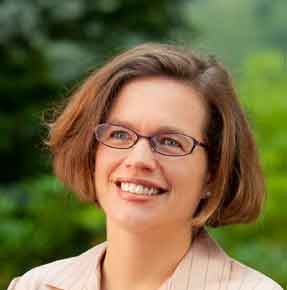
Anne Bentley teaches general, inorganic, and materials chemistry at Lewis & Clark College in Portland, OR. In the past, she completed her undergraduate studies at Oberlin College, taught high school in Namibia as a Peace Corps volunteer, grew nanowires as a PhD student at the University of Wisconsin, and combined educational research with solar energy research as a postdoctoral fellow at Purdue University. Her current research focuses on the electrodeposition of MnO2 supercapacitor materials.
Chip Nataro, Lafayette College
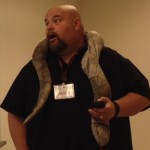 Chip Nataro has been at Lafayette since 1999 and has worked with 59 research students. He and his students perform research in organometallic chemistry with a particular fondness for bis(phosphino)ferrocene ligands. The group studies the electrochemistry, catalytic activity and coordination modes of these ligands. Nataro earned his PhD at Iowa State where he studied the protonation of M-M bonds. He went to the University of Vermont for his post doc where he split time learning about inorganic polymers and electrochemistry. Nataro teaches inorganic and general chemistry at Lafayette. He is a member of the leadership council of IONiC VIPEr, has participated in writing inorganic exams for the ACS exams institute and is a preceptor recipient of the ACS Division of Inorganic Chemistry Award for Undergraduate Research in 2013. He has also taught a first year seminar course on baseball and coaches the club baseball team at Lafayette.
Chip Nataro has been at Lafayette since 1999 and has worked with 59 research students. He and his students perform research in organometallic chemistry with a particular fondness for bis(phosphino)ferrocene ligands. The group studies the electrochemistry, catalytic activity and coordination modes of these ligands. Nataro earned his PhD at Iowa State where he studied the protonation of M-M bonds. He went to the University of Vermont for his post doc where he split time learning about inorganic polymers and electrochemistry. Nataro teaches inorganic and general chemistry at Lafayette. He is a member of the leadership council of IONiC VIPEr, has participated in writing inorganic exams for the ACS exams institute and is a preceptor recipient of the ACS Division of Inorganic Chemistry Award for Undergraduate Research in 2013. He has also taught a first year seminar course on baseball and coaches the club baseball team at Lafayette.
Jeff Raker, Univeristy of South Florida
Jeff Raker teaches organic chemistry at the University of South Florida and conducts chemical education research in the area of student learning across the chemistry curriculum and on the use of survey research methodologies to inform education practice. He did his undergraduate work in chemistry at Ohio Northern University, graduate work in college student development at Bowling Green State University, and Ph.D. in chemistry at Purdue University. Before joining the chemistry faculty at USF, he was a postdoctoral research associate with the ACS Examinations Institute. Jeff has been a member of the VIPEr community since Fall 2013 offering his expertise in assessment and evaluation. Along with evaluating the VIPEr Summer Workshops, Jeff has been assisting a group of inorganic chemists in characterizing the different types inorganic chemistry courses taught at the undergraduate level in the U.S. (see publications in the Journal of Chemical Education). On a lighter note, Jeff is a friend of the Mouse, living a short 80 miles from the Most Magical Place on Earth. Among his hobbies, Jeff designs and sews bow ties; he currently has over 50 bow ties in his collection with new bow ties being created weekly.
Joanne Stewart, Hope College
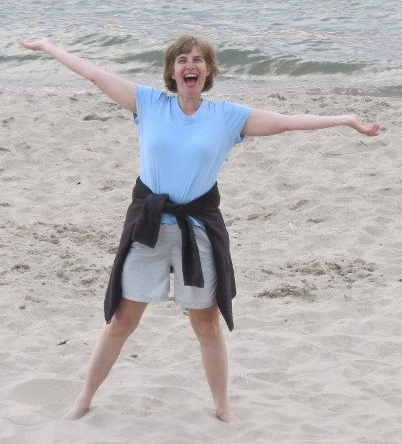 Joanne started her adventures in chemical education as part of the NSF-sponsored ChemLinks consortium in the mid 90’s. She is a faculty member in the chemistry department at Hope College where she has worked with 70 undergraduate research students. She is very interested in interdisciplinary teaching and learning and especially in how students integrate their knowledge to tackle complex problems. She has developed interdisciplinary courses on abrupt climate change and on the history of our concept of time. Although she thinks balance is a crock, she does believe in spending time with her family, working for safety and rights in her community, and fitness training at the gym.
Joanne started her adventures in chemical education as part of the NSF-sponsored ChemLinks consortium in the mid 90’s. She is a faculty member in the chemistry department at Hope College where she has worked with 70 undergraduate research students. She is very interested in interdisciplinary teaching and learning and especially in how students integrate their knowledge to tackle complex problems. She has developed interdisciplinary courses on abrupt climate change and on the history of our concept of time. Although she thinks balance is a crock, she does believe in spending time with her family, working for safety and rights in her community, and fitness training at the gym.
Lori Watson, Earlham College
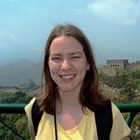 Lori Watson has been teaching General, Inorganic and Physical chemistry at Earlham College since 2004 and is now also serving as First Year Class Dean. Her research involves organometallic synthesis of unsaturated transition metal complexes and computational study of homogeneous catalytic systems and lanthanide/actinide coordination compounds. She graduated with a B.S. in Chemistry from the University of Kentucky and worked with Ken Caulton during her Ph.D. at Indiana University. Lori is a member of the IONiC leadership council and has even managed to delete the entire VIPEr website (even though they said it couldn’t be done!). In her spare time she weaves baskets (really!), takes long walks, and experiments in the kitchen.
Lori Watson has been teaching General, Inorganic and Physical chemistry at Earlham College since 2004 and is now also serving as First Year Class Dean. Her research involves organometallic synthesis of unsaturated transition metal complexes and computational study of homogeneous catalytic systems and lanthanide/actinide coordination compounds. She graduated with a B.S. in Chemistry from the University of Kentucky and worked with Ken Caulton during her Ph.D. at Indiana University. Lori is a member of the IONiC leadership council and has even managed to delete the entire VIPEr website (even though they said it couldn’t be done!). In her spare time she weaves baskets (really!), takes long walks, and experiments in the kitchen.